 W
WThe Atka B-24D Liberator is a derelict bomber on Atka Island in the Aleutian Islands of Alaska. The Consolidated B-24D Liberator was deliberately crash-landed on the island on 9 December 1942, and is one of only eight surviving D-model Liberators. The aircraft, serial no. 40-2367, was built in 1941, and was serving on weather reconnaissance duty when it was prevented from landing at any nearby airfields due to poor weather conditions. The only casualty of the crash landing was Brigadier General William E. Lynd, who suffered a fractured collarbone.
 W
WWhen the 1970 film adaption of Catch-22 began preliminary production, Paramount made a decision to hire the Tallmantz Aviation organization to obtain sufficient North American B-25 Mitchell (B-25) bomber aircraft to recreate a Mediterranean wartime base as depicted in the Joseph Heller novel of the same name. Tallmantz president, Frank G. Tallman found the war-surplus aircraft. He also gathered aircrew to fly the aircraft and ground support crew to maintain the fleet.
 W
WThe Bellanca 77-140 Bomber was a bomber aircraft built in small numbers in the United States in the 1930s. It was a derivative of Bellanca's successful Aircruiser civil transport, but the Aircruiser's single, nose-mounted engine was replaced by twin engines on the upper wing. The United States military were not interested in the type, but the Colombian Air Force bought a small number, including a float-equipped version dubbed the 77-320 Junior. This version also differed from the landplane in having a fully enclosed nose turret in place of the open turret of the 77-140.
 W
WThe Boeing YB-9 was the first all-metal monoplane bomber aircraft designed for the United States Army Air Corps. The YB-9 was an enlarged alteration of Boeing's Model 200 Monomail commercial transport.
 W
WThe Boeing XB-15 was a United States bomber aircraft designed in 1934 as a test for the United States Army Air Corps (USAAC) to see if it would be possible to build a heavy bomber with a 5,000 mi (8,000 km) range. For a year beginning in mid-1935 it was designated the XBLR-1. When it first flew in 1937, it was the most massive and voluminous aircraft ever built in the US. It set a number of load-to-altitude records for land-based aircraft, including carrying a 31,205 lb (14,154 kg) payload to 8,200 ft (2,500 m) on 30 July 1939.
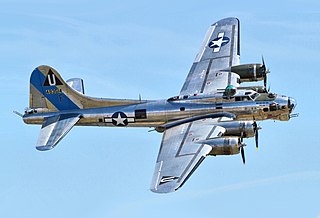 W
WThe Boeing B-17 Flying Fortress is a four-engined heavy bomber developed in the 1930s for the United States Army Air Corps (USAAC). Competing against Douglas and Martin for a contract to build 200 bombers, the Boeing entry outperformed both competitors and exceeded the air corps' performance specifications. Although Boeing lost the contract because the prototype crashed, the air corps ordered 13 more B-17s for further evaluation. From its introduction in 1938, the B-17 Flying Fortress evolved through numerous design advances, becoming the third-most produced bomber of all time, behind the four-engined Consolidated B-24 Liberator and the multirole, twin-engined Junkers Ju 88.
 W
WThe Boeing XF6B-1 / XBFB-1 was Boeing's last biplane design for the United States Navy. Only the one prototype, Model 236, was ever built; although first flying in early 1933, it rammed into a crash barrier in 1936 and the design was not pursued further.
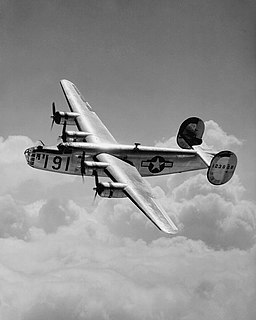 W
WThe Consolidated B-24 Liberator is an American heavy bomber, designed by Consolidated Aircraft of San Diego, California. It was known within the company as the Model 32, and some initial production aircraft were laid down as export models designated as various LB-30s, in the Land Bomber design category.
 W
WConsolidated Liberator I was the service name of the first Consolidated B-24 Liberator four-engined bombers to see use with the Royal Air Force (RAF).
 W
WThe Consolidated XB2Y was an American prototype single-engined dive bomber of the 1930s. It was intended to meet a United States Navy requirement for a carrier-based dive bomber, but was unsuccessful, only a single example being built.
 W
WThe Curtiss BF2C Goshawk was a United States 1930s naval biplane aircraft that saw limited success and was part of a long line of Hawk Series airplanes made by the Curtiss Aeroplane and Motor Company for the American military, and for export as the Model 68 Hawk III.
 W
WThe Curtiss T-32 Condor II was a 1930s American biplane airliner and bomber aircraft built by the Curtiss Aeroplane and Motor Company. It was used by the United States Army Air Corps as an executive transport.
 W
WThe Douglas A-20 Havoc is an American medium bomber, attack aircraft, night intruder, night fighter, and reconnaissance aircraft of World War II.
 W
WThe Douglas Y1B-7 was a 1930s American bomber aircraft. It was the first US monoplane given the B- 'bomber' designation. The monoplane was more practical and less expensive than the biplane, and the United States Army Air Corps chose to experiment with monoplanes for this reason. At the time the XB-7 was ordered, it was being tested by Douglas Aircraft as an observational plane.
 W
WThe Douglas YOA-5 was an Amphibious aircraft designed for the United States Army Air Corps. Although a prototype was built, it did not enter production.
 W
WThe Douglas B-18 Bolo is an American medium bomber which served with the United States Army Air Corps and the Royal Canadian Air Force during the late 1930s and early 1940s. The Bolo was built by the Douglas Aircraft Company, based on its DC-2, and was developed to replace the Martin B-10.
 W
WThe Douglas B-23 Dragon is an American twin-engined bomber developed by the Douglas Aircraft Company as a successor to the B-18 Bolo.
 W
WThe Douglas TBD Devastator was an American torpedo bomber of the United States Navy. Ordered in 1934, it first flew in 1935 and entered service in 1937. At that point, it was the most advanced aircraft flying for the Navy and possibly for any navy in the world. However, the fast pace of aircraft development quickly caught up with it, and by the time of the Japanese attack on Pearl Harbor the TBD was already outdated.
 W
WThe Douglas XT3D was an American three-seat torpedo bomber biplane developed by the Douglas Aircraft Company to meet a United States Navy requirement.
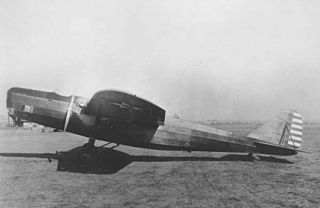 W
WThe Fokker XB-8 was a bomber built for the United States Army Air Corps in the 1920s, derived from the high-speed Fokker O-27 observation aircraft.
 W
WThe Great Lakes BG was an American carrier-based dive bomber of the 1930s. Designed and built by the Great Lakes Aircraft Company of Cleveland, Ohio, 61 were used by the United States Navy and United States Marine Corps from 1934 to 1940.
 W
WThe Great Lakes XTBG-1 was an American prototype torpedo bomber, intended for service in the United States Navy as part of that service's plan to modernise its aerial striking force in the mid-1930s. The XTBG-1 was outperformed by the competing TBD Devastator, however, in addition to having instability problems and only a single prototype of the three-seat design was constructed during 1935.
 W
WThe Hall XPTBH was a prototype American twin-engined seaplane, submitted to the United States Navy by the Hall Aluminum Aircraft Corporation in response to a 1934 specification for new bomber and scout aircraft. Constructed in an innovative fashion that made extensive use of aluminum, the XPTBH proved successful in flight testing, but failed to win favor with the U.S. Navy. No production contract was awarded, and the single aircraft built served in experimental duties before its destruction in a hurricane during 1938.
 W
WThe Keystone B-3A was a bomber aircraft developed for the United States Army Air Corps by Keystone Aircraft in the late 1920s.
 W
WThe Keystone B-4 was a biplane bomber, built by the Keystone Aircraft company for the United States Army Air Corps.
 W
WThe Keystone B-5 is a light bomber made by the Keystone Aircraft company for the United States Army Air Corps in the early 1930s. The B-5A was a Keystone B-3A with Wright Cyclone rather than Pratt & Whitney engines.
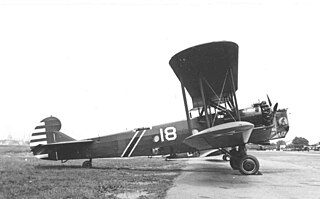 W
WThe Keystone B-6 was a biplane bomber developed by the Keystone Aircraft company for the United States Army Air Corps.
 W
WThe Martin Model 146 was an unsuccessful American bomber design that lost a 1934–1935 bomber design competition to the prototype for the Douglas B-18 Bolo.
 W
WThe Martin B-10 was the first all-metal monoplane bomber to be regularly used by the United States Army Air Corps, entering service in June 1934. It was also the first mass-produced bomber whose performance was superior to that of the Army's pursuit aircraft of the time.
 W
WThe North American NA-40 was an American prototype bomber aircraft developed by North American Aviation in the late 1930s for evaluation by the United States Army Air Corps. Although unsuccessful, it led directly to the North American B-25 Mitchell medium bomber.
 W
WThe North American XB-21 and sometimes referred to by the name "Dragon", was a prototype bomber aircraft developed by North American Aviation in the late 1930s, for evaluation by the United States Army Air Corps. Evaluated against the Douglas B-18 Bolo, it was found to be considerably more expensive than the rival aircraft, and despite the ordering of a small number of evaluation aircraft, only the prototype was ever built.
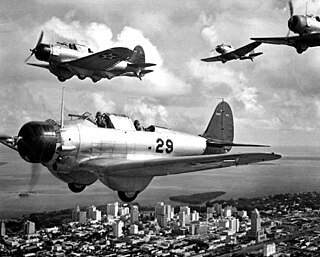 W
WThe Northrop BT was an American two-seat, single-engine monoplane dive bomber built by the Northrop Corporation for the United States Navy. At the time, Northrop was a subsidiary of the Douglas Aircraft Company.